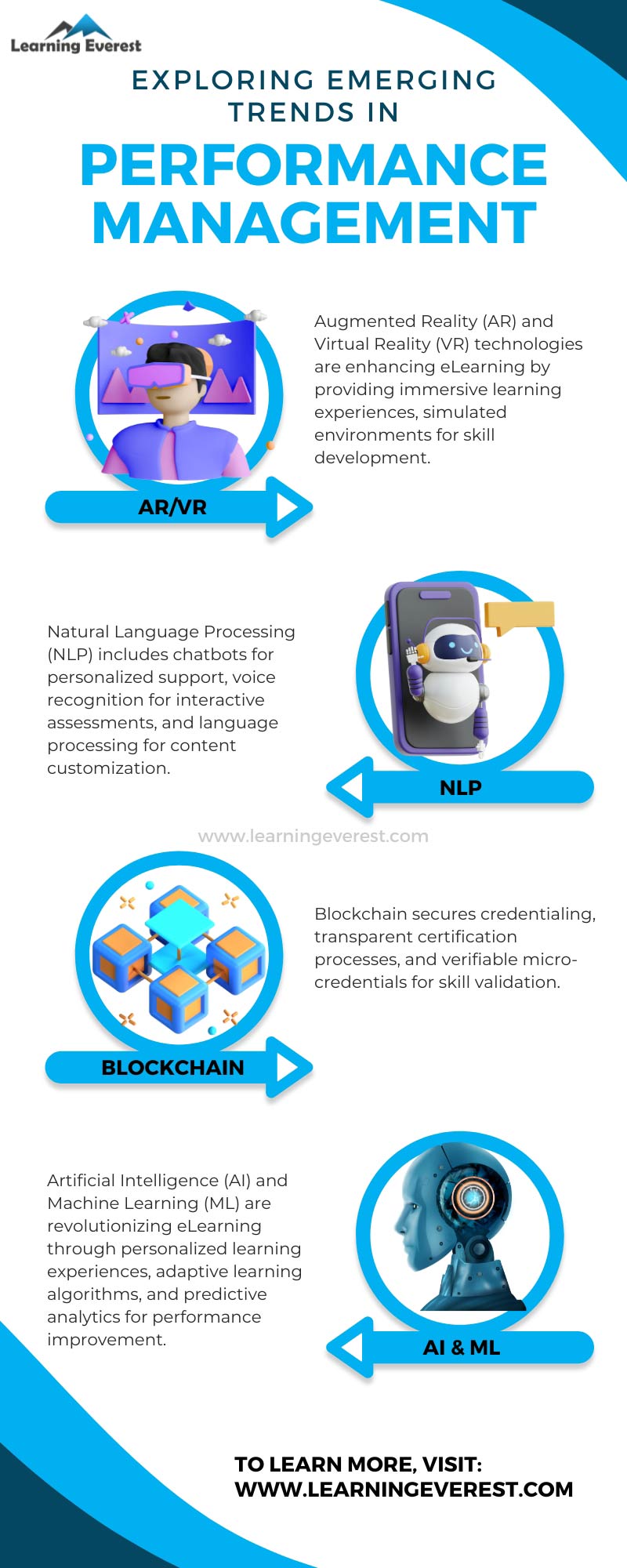Performance management is critical to organizational success, yet it often needs more attention. Continuous learning is the only solution. In the workspace, it ensures employees consistently gain and improve job-related skills. Its performance management component builds better managers. In this blog, we will help you discover how continuous learning through eLearning can address these issues and help your team fill personal performance gaps.
Table of Contents
What is a Performance Management System?
A Performance Management System (PMS) is a group of procedures and instruments intended to track and assess employees’ performance. Helping employees enhance their performance also entails setting Key Performance Indicators (KPIs) and individual goals. By providing a framework for controlling employee performance, a competent PMS can assist organizations in achieving their goals and objectives in the long run. It can also help in problem-solving and act as a support system for everyone.
A step-by-step guide to incorporate continuous learning and LMS that can provide adequate performance management.
1. Establishing Effective Feedback Mechanisms:
Effective communication is fundamental to successful performance management. Incorporating feedback mechanisms early in the process fosters a culture of openness and improvement. Facilitators and employees should be trained to deliver and receive constructive feedback constructively, focusing on actions rather than individuals. You want your feedback target to recognize what the employees did or didn’t do was wrong. Then, you must offer ways to fix it accordingly. But if feedback leaves the person themselves feeling attacked or ashamed, they won’t objectively take the input in. You can also train staff to feel less “scared” about providing feedback in the first place. Get them to focus on positive outcomes rather than a few awkward exchanges.
2. Conducting Pre-Assessments:
Conducting pre-assessment before embarking on training initiatives is essential to identifying individual learning needs and preferences. Pre-assessments can take various forms to gauge existing knowledge and skills, including surveys and self-evaluation questionnaires. The idea is to keep things as fun as possible, which makes employees more likely to respond honestly. Moreover, periodic reassessments enable organizations to adapt training strategies in response to evolving employee requirements, ensuring alignment with organizational objectives. Follow up by discovering which pleasurable skills they’d like to learn or improve.
3. Offering Personalized Learning Paths:
The next step is to design a curriculum. Personalization is critical to optimizing learning outcomes in eLearning environments. Collaborating with employees to develop personalized learning paths based on their career aspirations and development goals enhances engagement and motivation. Allow trainees to switch paths and customize a new career journey at any point. A marketing intern might realize they’re better at accounting or front-desk work. Continuous learning and training will help employees recognize their career shifts, and tailored performance management scheduling will help them get there and detect emerging trends and gaps that stand in the way of achieving the employees’ true potential.
4. Providing Just-In-Time Support Tools:
In today’s dynamic work environment, access to timely support resources is crucial for overcoming challenges and driving performance. Integrating just-in-time support tools within eLearning platforms equips employees with the necessary resources to address immediate needs. A well-run LMS can offer just-in-time training resources in any scenario, whether you’re preparing for a compliance examination or negotiating with customs to get your delivery truck across state borders.
5. Implementing Post-Assessment Strategies:
Continuous assessment is integral to gauging the effectiveness of learning initiatives and reinforcing knowledge retention. Post-assessment strategies encompass a range of evaluation methods, including quizzes and performance evaluations, to measure knowledge transfer and application. It doesn’t stop at the end of a training course. But before you proceed, you want to be sure your employees have grasped what went before. Continuous learning can help you design summaries and evaluation tests to verify proper knowledge transfer. They can guide L&D on which training to recommend next and which training gaps require further elaboration. Aside from end-of-unit quizzes, tailored reports can help generate and structure all that Big Data.
To learn more about performance management, explore emerging trends in AI and ML that could further impact corporate training, such as augmented reality (AR) and virtual reality (VR) integrations, natural language processing (NLP) for improved interaction, and blockchain for secure certification processes, schedule a meeting today.
Infographic

Exploring Emerging Trends In Performance Management
Knowledge Check!
Frequently Asked Questions (FAQs)
What is continuous learning?
Continuous learning refers to the ongoing process of acquiring and updating skills and knowledge through various educational methods.
How does continuous learning contribute to performance management?
Continuous learning ensures that employees consistently gain and improve job-related skills, which directly impacts their performance. It helps in identifying and addressing personal performance gaps, leading to better overall performance management within the organization.
How can organizations gauge the effectiveness of their learning initiatives?
Organizations can use post-assessment strategies, such as quizzes and performance evaluations, to measure knowledge transfer and application. Continuous assessment helps identify areas for improvement and ensure that learning objectives are met.





